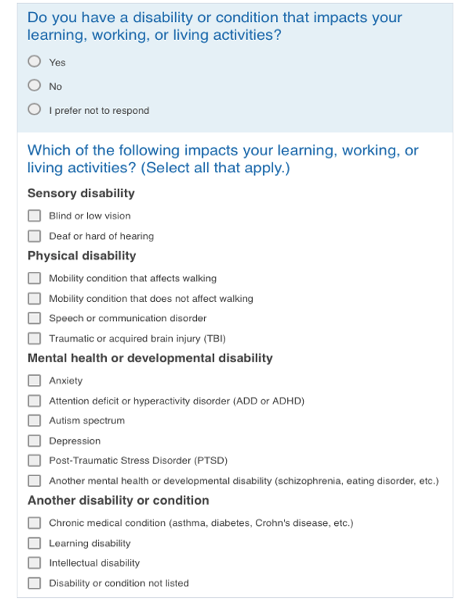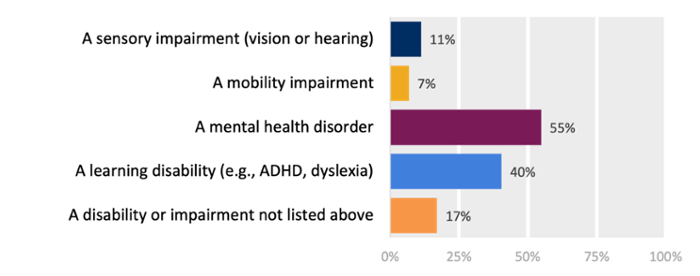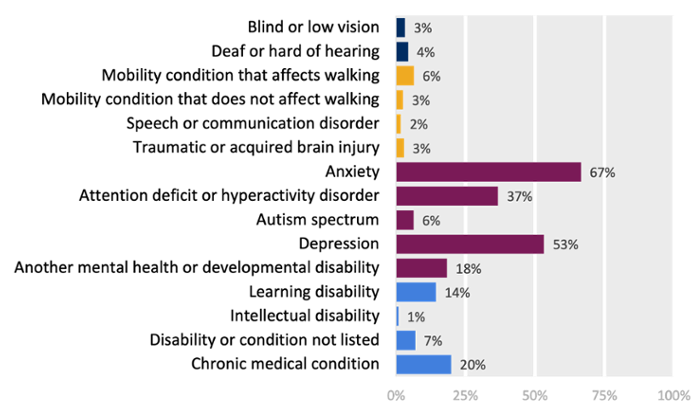For higher education institutions to meet the needs of the students they serve, stakeholders must first understand whom they serve. Using questions like the NSSE disability item allows institutional researchers to examine student engagement across broad categories. In 2020, 14% of students identified as having been diagnosed with a disability or impairment. Similarly, in 2021, 14% of students said they had “a disability or condition that impacts their learning, working, or living activities.” Despite this similarity in results for the initial question, we see great differences in the results of follow-up questions (Figures 1 and 2). In 2020, 11% of students with a disability indicated a sensory impairment, but in 2021, 3% and 4% of students indicated blind or low vision and deaf or hard of hearing, respectively. This disaggregation can allow for accommodations for students with very different sensory needs. Similarly, 2020’s indication of a mobility impairment can now be more accurately identified by a variety of physical disabilities in 2021.
Although students indicated an increase in mental health issues since the COVID-19 pandemic began in 2020 (NSSE, 2021; Olsen et al., 2021), the disaggregation of mental health or developmental disabilities allows student services staff, administrators, and faculty to be more targeted in their efforts to support students. At first glance, it might appear that learning disabilities declined substantially between 2020 and 2021 (40% vs. 14%), but it’s important to note that in 2021, in addition to a learning disability, students were able to select other issues such as an intellectual disability and attention deficit or hyperactivity disorder (ADHD). Indeed, the generic “disability or impairment not listed” in 2020 dropped from 17% in 2020 to 7% in 2021.
Aligned with the critical methodologies component of this Annual Results installment, the new, disaggregated disability item allows students to better categorize themselves and helps them feel more affirmed by their institution by recognizing their specific disability.
References
National Survey of Student Engagement. (2021). Engagement insights: Survey findings on the quality of undergraduate education–annual results 2020. Bloomington, IN: Indiana University Center for Postsecondary Research. Retrieved from https://nsse.indiana.edu/research/annual-results/2021/index.html.
Olson, R., Fryz, R., Essemiah, J., Crawford, M., King, A., & Fateye, B. (2021). Mental health impacts of COVID-19 lockdown on US college students: Results of a photoelicitation project. Journal of American College Health, 1-11.





